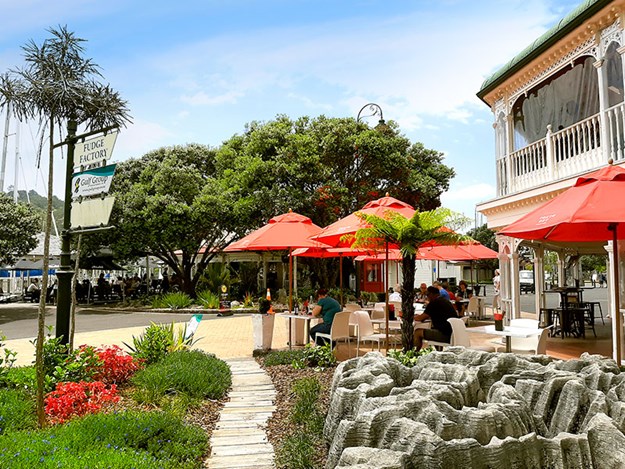 |
There are some options for lunch around Whangarei’s Town Basin |
Whangarei’s Town Basin has long been a favourite destination for locals and visitors alike. There are shops, galleries, restaurants, and cafes housed in colonial-style buildings overlooking the marina. As well as Whangarei-based boats, there are ocean-going yachts moored in the basin, as international visitors sit out the Pacific hurricane season, or decide on a longer stay. Even though I’m a local, I always find something new going on Quayside and along the Hatea Loop.
First stop for visitors should be Te Manawa, The Hub. This building is one of Whangarei’s information centres and the staff have a wealth of local knowledge. There are lots of maps and brochures to peruse – I picked up the latest visitor guide as I felt I should learn more about the places and sculptures I walk past so regularly.
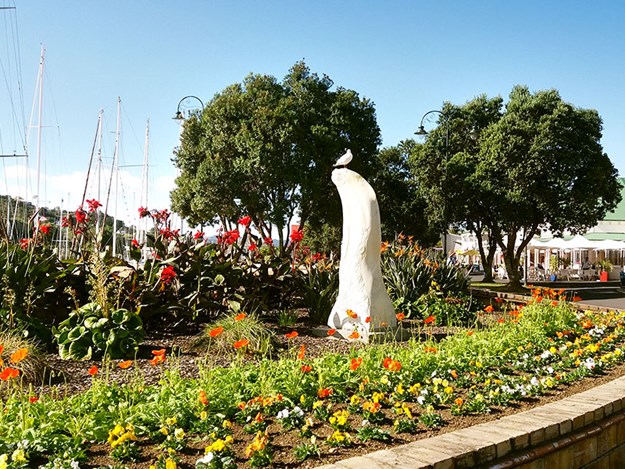 |
A lovely spot to stop and admire the scenery |
Inspired architecture
The Hub is more than an information centre; it also houses Whangarei Art Museum Te Manawa Toi. The gallery curates a variety of exhibitions, as well as displaying art from its collections. Entry is by donation and it is well worth a look.
On this occasion though, I was drawn to the colourful, funky model of Whangarei’s newest building project, the Hundertwasser Art Centre with Wairau Maori Gallery (HAC). Admiring the organic form of the architecture, I was reminded that the Hundertwasser Centre will be radically different to the surrounding architecture. When completed it will be a unique feature in Whangarei and is expected to draw visitors from around the country and overseas.
Outside on Quayside I wandered up the spiral ramp inside the folly building called Te Kākano (The Seed). It is a little koru-shaped building, something like a tiled lighthouse with round windows and ball-topped pillars. It was built in 2016 as a precursor to the 100-times bigger HAC development behind it. From the top I peered across the building site and tried to imagine the completed structure.
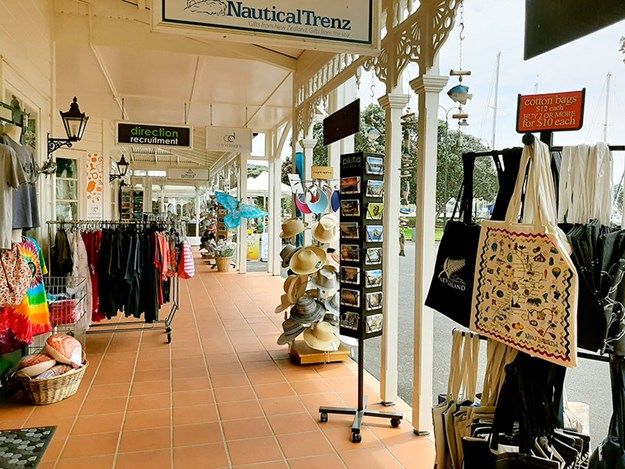 |
Specialty shops beside the water |
Gorgeous galleries
Along the pedestrianised Quayside there are a cluster of speciality shops and galleries. The Bach sounds suitably seaside-like but its name is actually an acronym – Basin Art and Craft House. Every item on sale here is produced locally but don’t be misled, this isn’t an amateur set up, the Bach Gallery sells quality products with a Northland vibe.
On the waterfront nearby I checked out Burning Issues Gallery. As well as being able to browse and buy handmade glass, paintings, jewellery and ceramics, visitors can watch glass blowing from a viewing platform at the rear of the shop. Glass artist Keith Grinter also holds beginners’ workshops.
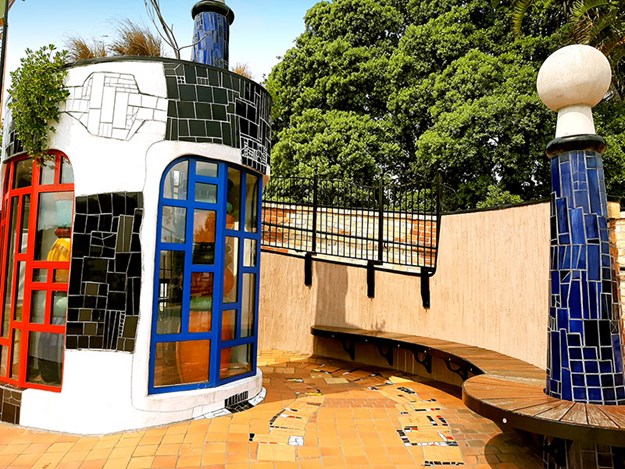 |
Te Kākano(The Seed) |
Dining beside the river
From a casual ice-cream on a hot day, or dining with the water lapping beneath your feet, there are plenty of options at the basin. There are cafes with courtyards and shady sun umbrellas, where you can grab a coffee or enjoy a lazy lunch watching the activity on the water.
The Fudge Farm is everyone’s idea of an old-fashioned sweet shop, its shelves packed with varieties of fudge and other sweet treats. Started in a farmhouse kitchen using a family recipe, the Fudge Farm shop is a popular spot – and not only with the children. As well as fudge, you can enjoy espresso, cool drinks, ice cream and desserts on the tables outside. I chose one of the delicious ice cream options to enjoy while I looked around at the nearby restaurants.
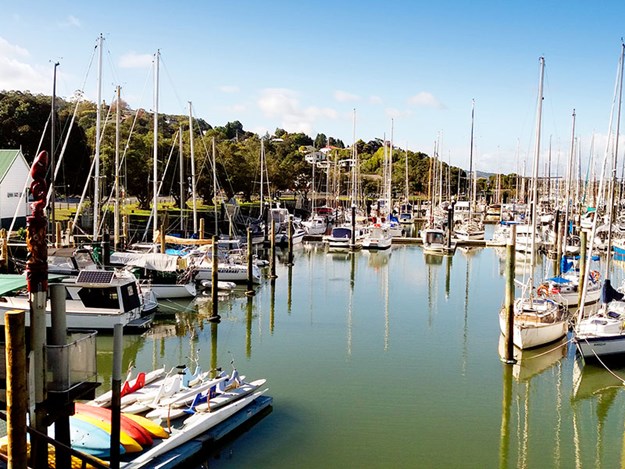 |
The Town Basin marina is a haven for the yachting community |
Next door, No 8 Restaurant and Bar provides dining in a stunning hexagonal-shaped building. It has a white-painted, balustraded balcony on the second floor and is topped by a little tower. But arguably the best location for brunch or dinner is at the Quay, where the restaurant’s deck is right over the Hatea River.
Messing about on the river
Not only can you sit and admire the yachts, but out on the water there’s the option of hiring an aqua cycle or kayak and, on summer weekends, the MV Waipapa offers cruises along the harbour to Matakohe-Limestone Island. Once home to a thriving industrial village with a post office and school, the island is now a nature, scenic and kiwi reserve.
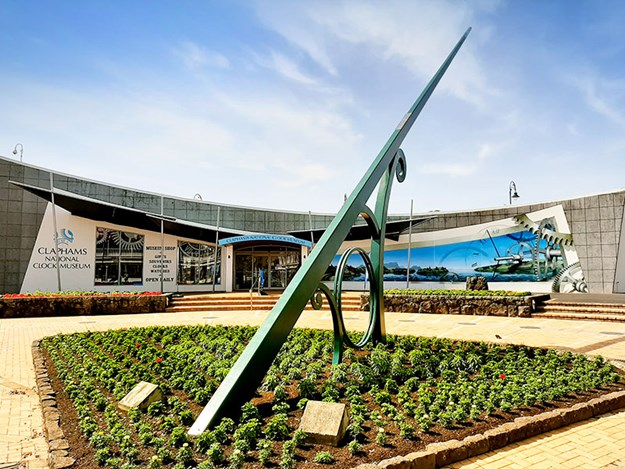 |
Claphams Clock Museum |
For the kids
Ice cream finished, I set off to walk the loop. At the start of the walkway another unusual building houses Claphams Clock Museum. This museum is home to the largest collection of timepieces in the Southern hemisphere, everything from rare antiques to fun and strange clocks. It’s a great place to take kids.
Outside there’s a huge sundial, and beside it an area of grass destined to be home to a rolling ball clock.Unsure what this was, I followed the signs to a nearby workshop where I discovered the About Time Project. Volunteers have been working for several years to create what looks like a giant marble-rolling toy. In reality, this kinetic sculpture is an accurate timepiece and an amazing piece of engineering. I don’t claim to understand how it works but I stood mesmerised by the rolling balls and clicking cogs. The enthusiastic builders are fundraising so the rolling ball clock can be moved to its new home beside the river.
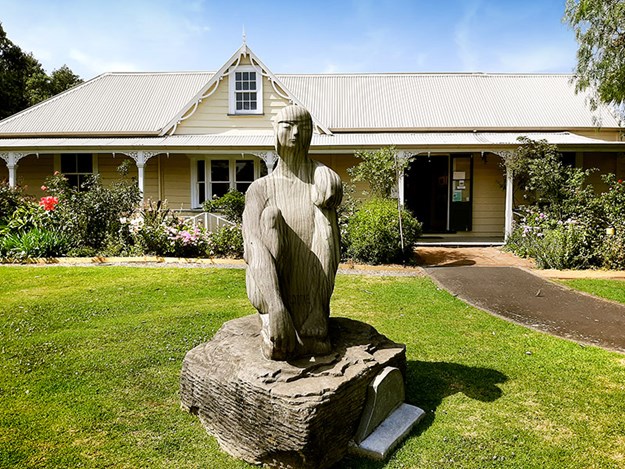 |
Reyburn House |
Markets and more
Back on the brightly painted wooden walkway, children were having the time of their lives on a popular adventure playground. Just beyond the play area is Whangarei’s oldest house. A true colonial gem, white-painted Reyburn House is surrounded by a pretty cottage garden and is a gallery for local artists. During the summer, this grassy area is the venue for markets. On Saturday mornings there is a craft market with stalls full of artwork, handmade soaps, garden art and much more. There’s a coffee caravan and live music if you just need to sit and chill for a while. On Friday evenings foodies gather at the night market where stalls sell multicultural cuisine.
Walking the loop
The Hatea Loop Walkway Huarahi o te Whai runs for 4.2km from the Town Basin (or other points along its length) crossing bridges and linking both banks of the Hatea River. It’s about an hour’s stroll, and is a shared path, so watch out for cyclists.
Heading south from the Town Basin, the walkway leads past 16 different sculptures. These range from quite small to enormous and are constructed from diverse mediums, from marble to steel pipe.
Outside Reyburn House I admired Lottie by Kap Pothan, commemorating the first child born to the Reyburn family.
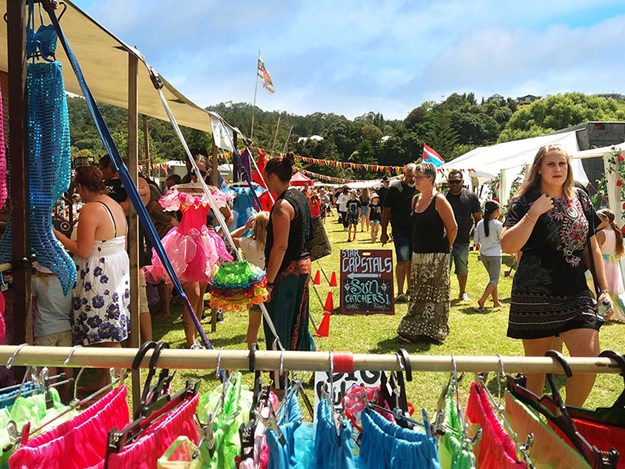 |
The gypsy fair market |
A contrast is Kaitiaki, a two-metre-tall guardian figure carved by Manos Nathan. Probably the most eye-catching sculpture is Chris Booth and Te Warihi Hetaraka’s Wave and Waka sculpture, featuring an enormous stone wave suspended above a canoe. This celebrates the history of the site as a landing place for Māori and European alike. Information panels relating the history and mythology of the area can be found beside the path.
The next section of the loop walk took me over a footbridge, Kotuitui Whitinga, which is sculptural in itself and studded with paua. This bridges the Raumanga Stream, which empties into the river at this point. On the right, the Pocket Park is another entrance to the loop. The Pocket Park, and Bascule Park close by, have been recently developed and feature murals and attractive plantings. Bascule Park has motorhome parking and a pop-up cafe.
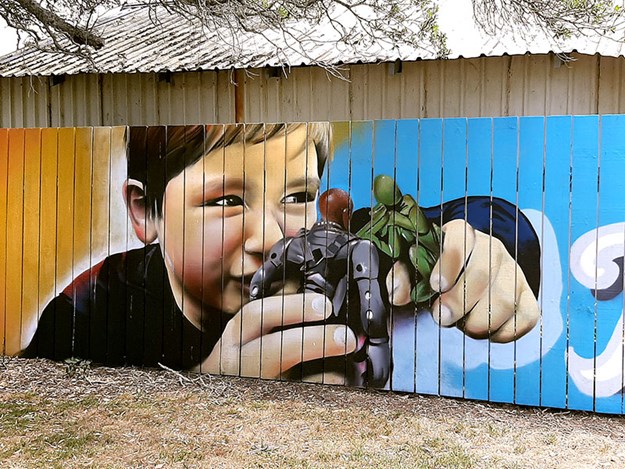 |
Mural on the loop |
One of the most photographed parts of the loop would be the award-winning Te Matau ā Pohe (the fish hook of Pohe) bridge. The design is inspired by the shapes of Māori fishhooks and waka prows. This bridge across the Hātea River opens to let yachts pass through on their way to the Town Basin Marina.
The loop walk continues along the far side of the river, past the site of another upcoming project, the camera obscura. This 8-metre structure will be an interactive sculpture which promises to give visitors unique views of the surroundings.
The final stretch of the walk passes beside the William Frazer Memorial Park, home to a skateboard park and a BMX track. The park is also the venue for the circus and the Gypsy Extravaganza Fair when they make their annual visits to Whangarei. On Hatea Drive walkers pass a small marina and cute boathouses, before coming to my favourite coffee stop. Tiny Kafe, tucked at the back of a surf shop by the marina, has a courtyard shaded by a huge old pohutukawa. It’s a great spot to watch all the activity on the other bank before wandering back beside the river and over the Canopy Bridge, its awnings designed to look like sails.
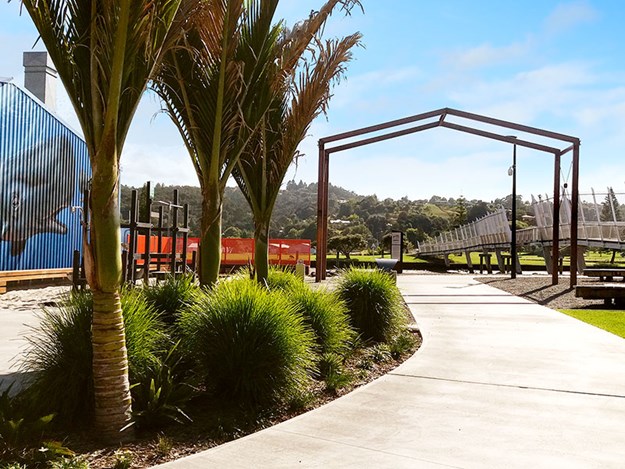 |
Pocket Park |
Further information
There are two places for motorhomes to park beside the loop. Bascule Park has eight designated places for non self-contained vehicles (there are toilets at the park). Self-contained vehicles can stay at the car park on Reyburn House Lane. There is a maximum of three nights at both spots.
Te Manawa The Hub Information Centre is open seven days: Monday-Friday 9.00am-5.00pm, and 9.00am-4.30pm on weekends.





